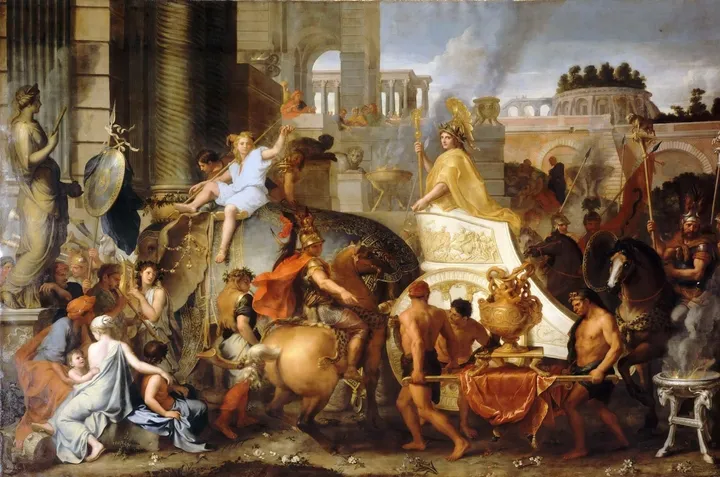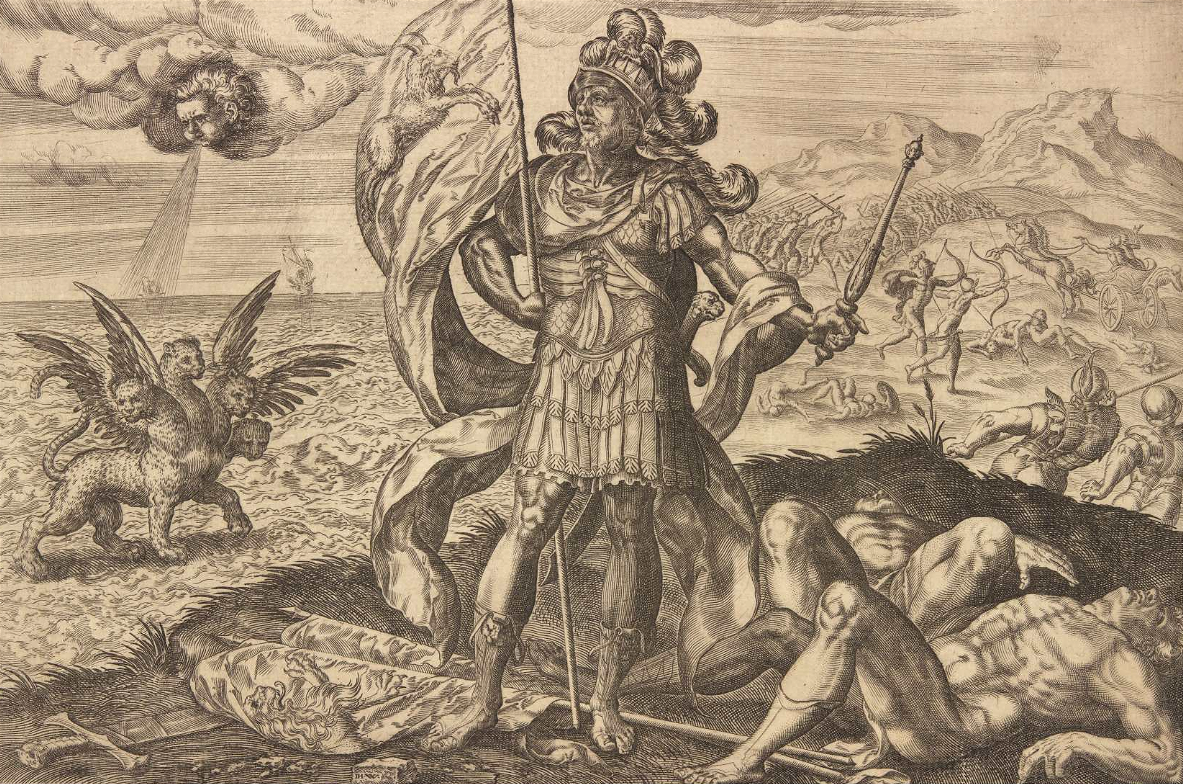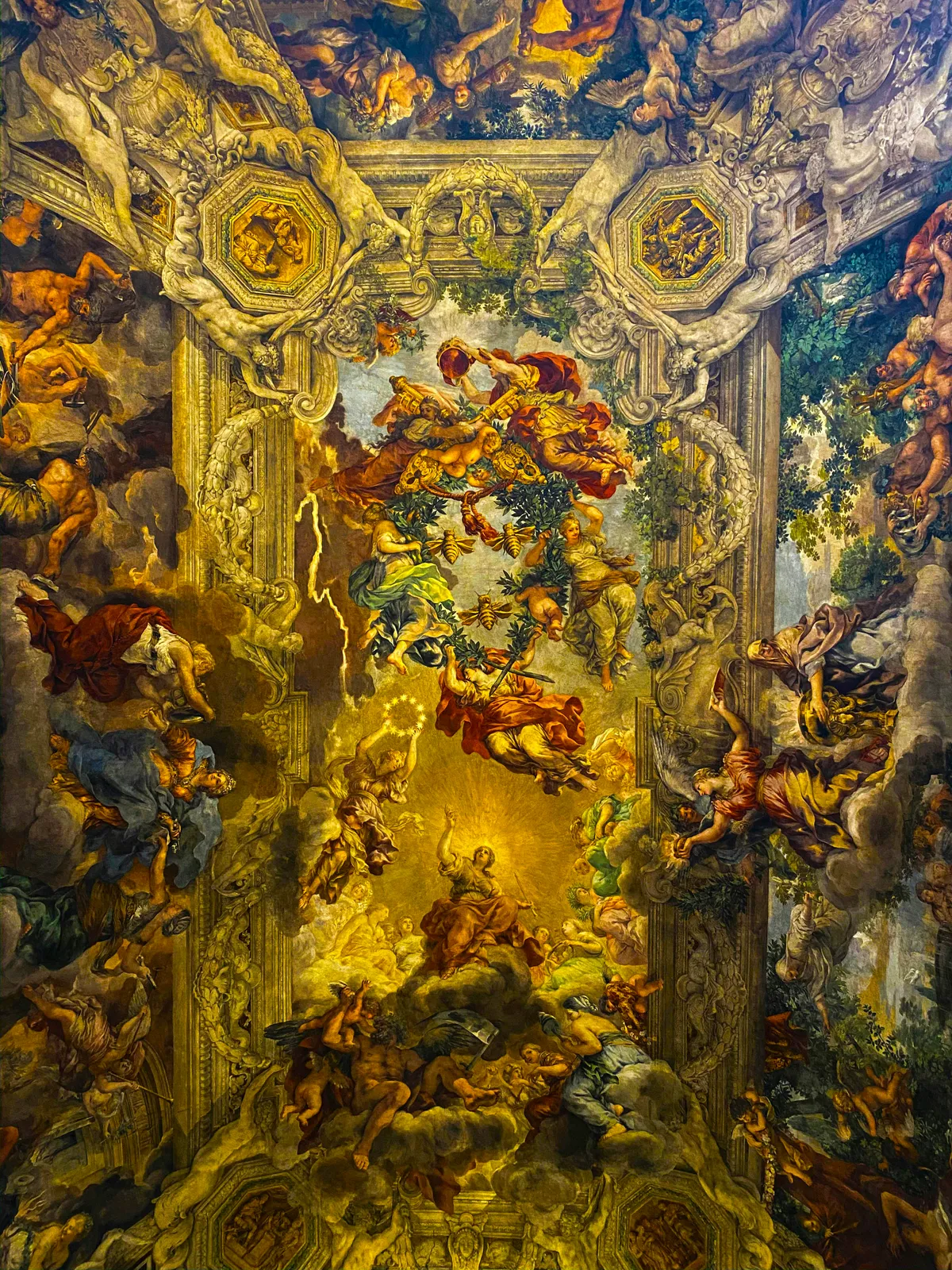Why Great Empires Never Die
And how they justify their power...

As the fires of Rome dimmed and its marble crumbled, a strange thing happened: the empire refused to die.
Though centuries ticked by from its official end in 476, new rulers emerged who all claimed a lineage to the ancient, long-gone empire. Roman ruins dotted Europe, but kings and conquerors still appealed to the legacy of the once-great civilization.
And its not just a phenomenon of the distant past — modern leaders continue to appeal to the glory of bygone cultures, resurrecting their symbols, mottos, and art. But why do so many rulers reach backward in time to secure political dominance today?
An introduction to the concept of translatio imperii: how empires inspire empires and inherit their power...
Reminder: you can support us and get tons of members-only content for a few dollars per month 👇
- Two full-length, new articles every single week
- Access to the entire archive of useful knowledge that built the West
- Get actionable principles from history to help navigate modernity
- Support independent, educational content that reaches millions
Justifying an Empire
Latin for ‘transfer of rule’, translatio imperii is the metahistorical idea that one empire may live on as the successor of a former empire, despite being separated by time and geography. It’s analogous to the idea of royal succession — how monarchs pass on their positions to their children — except applied to the scale of nations and empires.
But why link an empire to a previous one?

In short, invoking translatio imperii is an attempt to establish legitimacy. By claiming lineage to a former empire, new rulers and conquerors cement their claims to power with a legal basis. The term echoes the form of imperial succession written about in the Book of Daniel:
“And after thee shall arise another kingdom inferior to thee, and another third kingdom of brass, which shall bear rule over all the earth. And the fourth kingdom shall be strong as iron…”
The four kingdoms mentioned are usually interpreted to be Babylon, Persia, Greece, and the Roman Empire. Referencing this passage, then, some movements have claimed that they were the "fifth kingdom."
For example in the 17th century, the religious movement of the Fifth Monarchists claimed England to be the prophesied successor. England was thus justified by a religious foundation and mission. But this story isn’t unique.
A similar concept emerged with the sermons and writings of Jesuit diplomat Fr. Antonio Vieira in Portugal. The Portuguese Empire, dubbed the "Fifth Empire," stretched across the globe, so it’s no surprise some saw it as the fulfillment of the prophecy in Daniel.
Translatio imperii, however, long predates these interpretations of Daniel...
Mythological Origins
The city of Troy — both historical and mythological — plays a unique role as the claimed origin for many peoples: Greek, Roman, and even Norse. In the Prose Edda, the Nordic gods are suggested to be former Trojan heroes, thereby tying Norse interests to Ancient Greece. Notably, Thor is described as originally from Thrace, the same home of the Greek god of war, Ares.
The Roman poet Virgil (and later Dante) assumed Rome, ruled by Caesar Augustus, as the new Troy, but it was the Roman Empire itself that became the ultimate template for later Western powers.
In Virgil’s Aeneid, Rome’s national epic, the god Jupiter prophesied the empire’s timelessness and universality:
“On the Romans I impose no boundaries of time or place: I have granted them empire without end.”
And throughout history, the Roman Empire is continually resurrected.
Medieval Empires
By far the most famous application of translatio imperii is the Holy Roman Empire’s claim as the revival of the Western Roman Empire. Charlemagne — by agreement with Pope Leo III — was crowned as Roman Emperor in 800 A.D., after a 300 year slumber of the Roman name.
Otto I would continue the title, marking the Holy Roman Empire that continued for over 800 years. But the new empire would have a new character...
The addition of “Holy” to the new empire’s name symbolized that the foundation of the Medieval resurrection of the Roman Empire would stand on Christianity rather than on the mythological murder of Remus by Romulus. This Christianized rebirth of ancient greatness is embodied in the scholar Alcuin’s letter to Charlemagne:
“...a new Athens will arise in France, and an Athens fairer than of old, for our Athens, ennobled by the teaching of Christ, will surpass the wisdom of the Academy.”
Of course, claims of translatio imperii were not mutually exclusive. The Byzantine Empire naturally assumed itself as the successor to the Eastern Roman Empire, and Constantinople itself would be called the second Rome. Similarly, the Ottoman Empire — which continued for nearly 700 years — claimed a succession back to the Eastern Roman Empire through the intermediate Seljuk Empire and Sultanate of Rum.
Further north, the Russian Empire fashioned itself a rebirth from the ashes of the Byzantine Empire, hence linking themselves back up the chain to the Roman Empire again. Moscow would even be called the Third Rome in a bid to shift political power north of the Black Sea.
20th century historian Jacques Le Goff noted that the Medieval psyche was particularly receptive to the idea of inherited power and legacy due to how history was viewed very linearly by Medieval scholars. Hence, translatio imperii was particularly attractive in Medieval times.
Medieval chroniclers applied the idea on smaller scales, too, to substantiate the claims of regional powers. For example, the Saxons succeeded the Carolingian Franks who succeeded the Romans, and Germans viewed themselves as the most recent link in a chain of Longobards, Franks, and Romans.
Beyond Medieval
Examples of translatio imperii extend beyond the Medieval era, however. Through their poetry, humanists in Renaissance Florence depicted their home as a new Rome and the ruling Medici family as their Roman rulers.
Historian Arnold Toynbee pointed out that the political structures in Renaissance Italy in many ways mirrored the Ancient Greek city-states. It may be no coincidence, then, that Renaissance creatives looked back to the ancients, further attaching themselves to Greece and Rome.
Even in the New World — where legitimate succession seems impossible — Spain laid claim to Peru based on a succession from Inca Emperors, after the latter ceded the empire upon conversion and an enticing offer. The Spanish Empire then became the sum of the Roman and Incan empires.
In more recent history, the Third Reich claimed to be the successor to the German Empire (1871-1918), which itself succeeded the Holy Roman Empire (800/962-1806). The concept of succession was common during periods of rising nationalism to unify a people with its past heritage.
Breaking the Mold
Nonetheless, translatio imperii is not universally embraced or pursued. The concept runs counter to the idea of revolution: the former is an embrace of an inherited culture and ethos while the latter is a rejection.
The United States, for example, doesn’t claim a heritage per se to any previous empire. Though the United States was born from seeds set by the Roman, French, Spanish, and particularly British empires, the American spirit defines itself and its principles (particularly of checks and balances in government powers) in opposition to past empires.
In taking the antagonistic position to its predecessors, the revolutionary state must turn away from a past identity and towards a future uncertainty. In that regard, revolution is a tremendous risk.
But donning the identity of a former empire has unique dangers of a different kind: the long memories of neighboring states may not welcome a new Rome. For every friend of the Roman Empire, there was an enemy — to resurrect that identity may rekindle old foes.
The Roman specter never vanished from the West. It has been summoned in Europe within the last century and may yet be summoned again. But who will dare claim the name of Rome next?


